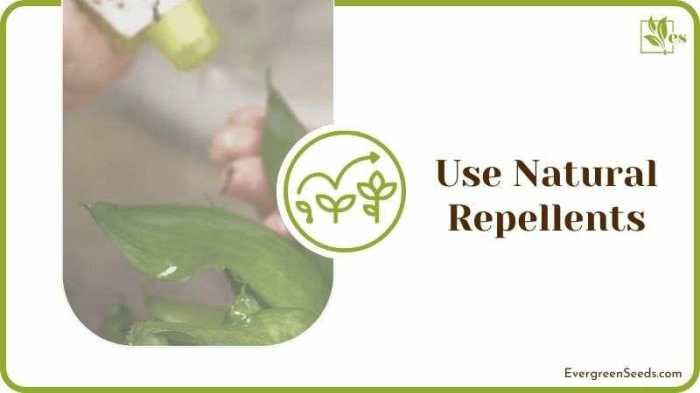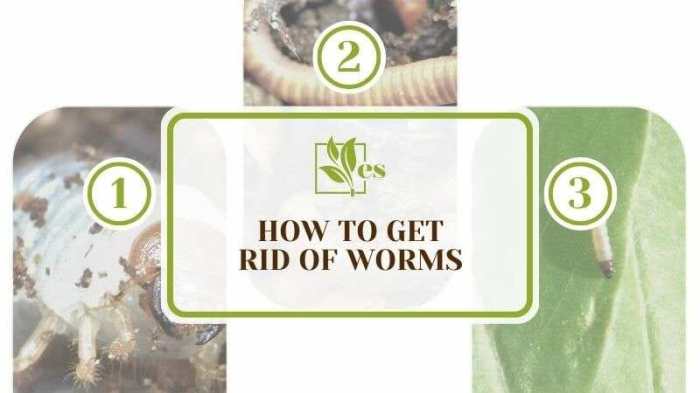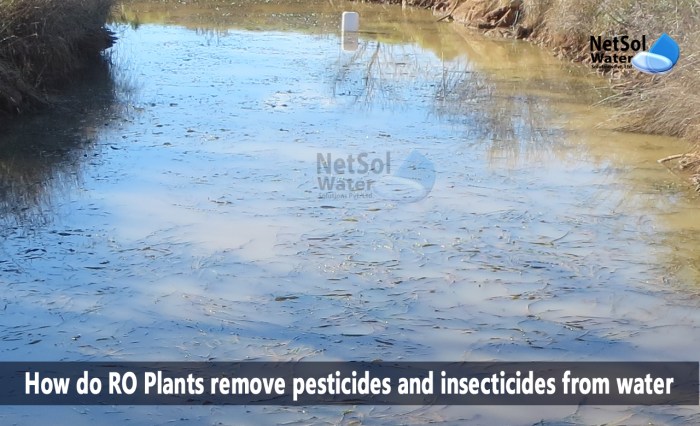How to Kill Water Plants Worms and Bugs
Identifying Water Plant Pests
How to kill water plants worms and bugs – Identifying the specific pests affecting your water plants is the first crucial step towards effective treatment. Various worms and insects can infest aquatic plants, causing damage that ranges from minor aesthetic issues to significant plant death. Accurate identification allows for targeted control methods, maximizing efficiency and minimizing harm to the overall ecosystem.
Common Water Plant Pests
Several common pests frequently plague water plants. These include, but are not limited to, aphids, snails, planarians, and various types of larvae. Understanding their appearance and behavior is key to effective management.
Aphids are small, soft-bodied insects, typically green, black, or brown, that cluster on plant stems and leaves, sucking plant sap. They are often visible to the naked eye. A magnified view reveals their pear-shaped bodies and long, slender legs.
Effective pest control in aquariums often involves targeted treatments; however, understanding the ecosystem is key. For instance, choosing the right plants can help naturally deter some pests. Learning which plants thrive in saltwater environments, such as those detailed in this helpful guide what plants are good for salt water aquarium , is crucial. Proper plant selection, combined with appropriate water parameters, can minimize the need for harsh chemical treatments to kill water plant worms and bugs.
Snails vary widely in appearance depending on the species. Some are small and brown, while others can be larger and exhibit more vibrant colors. They leave silvery trails as they move across surfaces and often consume plant tissue, leaving behind characteristic holes or scrapes.
Planarians are flatworms, often brown or black, that move gracefully through the water. They are usually less than an inch long and have a distinct, elongated body shape. They feed on smaller invertebrates and sometimes damage plant roots.
Larvae (of various insects such as mosquitoes or midges) can vary greatly in appearance depending on the insect species. Some are small and worm-like, while others may have distinct legs or other features. Their presence is often indicated by damage to plant leaves or roots.
Water Plant Pest Comparison, How to kill water plants worms and bugs

Source: evergreenseeds.com
| Pest Name | Appearance | Habitat | Damage Caused |
|---|---|---|---|
| Aphids | Small, soft-bodied insects; green, black, or brown; pear-shaped | Plant stems and leaves | Sap sucking, stunted growth, leaf discoloration |
| Snails | Variable; size and color vary widely; leave silvery trails | Water surface, plant stems, leaves, and roots | Consumption of plant tissue, holes and scrapes on leaves |
| Planarians | Flatworms; brown or black; elongated body | Water column, plant roots | Damage to plant roots, consumption of small invertebrates |
| Mosquito Larvae | Small, worm-like; often dark-colored | Water column, near plant roots | Can consume plant roots or interfere with oxygen levels |
Natural Pest Control Methods: How To Kill Water Plants Worms And Bugs

Source: evergreenseeds.com
Natural pest control methods offer a safer and more environmentally friendly approach to managing pests in aquatic environments. These methods aim to restore ecological balance, minimizing the use of harmful chemicals.
Introducing Beneficial Organisms
Introducing beneficial insects or organisms, such as predatory insects that feed on the target pests, can effectively control populations. For example, certain species of beetles and lacewings are known to prey on aphids. The success of this method depends on careful selection of the beneficial organism to match the specific pest.
Beneficial Bacteria and Fungi
Certain bacteria and fungi can be introduced to suppress pest populations. These microorganisms can either directly attack the pests or compete with them for resources, reducing their numbers. The application method involves introducing the beneficial microbes into the water, allowing them to naturally colonize the environment. The effectiveness varies depending on the specific species and environmental conditions.
Creating a Balanced Aquatic Ecosystem
A balanced aquatic ecosystem naturally discourages pest outbreaks. Maintaining healthy plant diversity, providing adequate oxygen levels, and avoiding overfeeding fish contribute to a stable environment where pests are less likely to thrive. Regular water changes and proper filtration also play crucial roles in preventing pest infestations.
Manual Removal Techniques
Manual removal is an effective method for dealing with visible pests, especially in smaller aquariums or ponds. This approach is particularly useful for targeting localized infestations or removing larger pests.
Step-by-Step Manual Removal
1. Identify and locate the pests: Carefully inspect your water plants for any visible worms, bugs, or snail trails.
2. Gather your tools: You’ll need tweezers, a small net, or gloves depending on the pest and plant type.
3.
Remove the pests: Gently remove the pests using your chosen tools. Avoid damaging the plant leaves or stems.
4. Clean the plants: Rinse the affected plants with clean water to remove any remaining pests or debris.
5.
Dispose of the pests: Dispose of the collected pests appropriately to prevent re-infestation.
Tools and Materials
- Tweezers
- Small net
- Gloves
- Bucket of clean water
Chemical Control Methods (if necessary)
Chemical pest control should be considered a last resort due to the potential risks to the aquatic environment and its inhabitants. If natural and manual methods prove insufficient, carefully select and apply aquatic-safe pesticides.
Risks and Drawbacks of Chemical Pesticides
Chemical pesticides can harm beneficial organisms, disrupt the delicate ecosystem balance, and potentially contaminate the water. They can also be toxic to humans and pets if not handled correctly. Improper use can lead to unintended consequences, including the development of pesticide-resistant pests.
Aquatic-Safe Pesticides

Source: netsolwater.com
Several pesticides are formulated for use in aquatic environments. These products typically have lower toxicity levels and are designed to break down quickly. However, it’s crucial to follow the manufacturer’s instructions carefully and choose a product appropriate for your specific situation. Always research and select a product with minimal environmental impact.
Chemical Control Application Guide
| Pesticide | Dosage | Application Method | Safety Precautions |
|---|---|---|---|
| [Example Pesticide 1] | [Dosage instructions] | [Application method – e.g., direct application to plants] | [Safety precautions – e.g., wear gloves and eye protection] |
| [Example Pesticide 2] | [Dosage instructions] | [Application method – e.g., water treatment] | [Safety precautions – e.g., avoid contact with skin and eyes] |
Preventing Future Infestations
Preventing future infestations is far more effective than treating existing problems. Proactive measures can significantly reduce the risk of pest outbreaks and maintain a healthy aquatic environment.
Preventative Measures
- Maintain proper water quality: Regularly test and adjust water parameters (pH, temperature, ammonia, nitrates).
- Ensure good plant health: Provide adequate light, nutrients, and proper water circulation.
- Quarantine new plants: Isolate new plants for a period before introducing them to your established ecosystem.
- Regular inspection: Conduct regular visual inspections of your water plants to detect early signs of infestation.
Regular Inspection Checklist
- Check for visible pests on plant leaves and stems.
- Examine plant roots for signs of damage or discoloration.
- Observe water clarity and look for unusual debris or organisms.
- Monitor plant growth and look for any signs of stunted growth or discoloration.
Understanding the Water Plant Ecosystem
A healthy aquatic ecosystem is a complex interplay of plants, animals, and microorganisms. Understanding these relationships is crucial for effective pest management and maintaining a thriving environment.
Interconnectedness of Organisms
Water plants provide habitat and food for many organisms, including beneficial insects and microorganisms that help control pest populations. Fish and other aquatic animals can also consume pests, contributing to natural pest control. The balance of these organisms is essential for a healthy ecosystem. Disruptions, such as pest outbreaks, can cascade through the food web, affecting multiple species.
Impact of Pest Infestations
Pest infestations can significantly impact the overall health of the aquatic environment. Heavy infestations can lead to plant death, reduced oxygen levels, and imbalances in the food web. This can affect the entire ecosystem, potentially leading to the loss of biodiversity and the collapse of the system.
Impact of Pest Control Methods
The choice of pest control method significantly impacts the aquatic ecosystem. Chemical pesticides can harm beneficial organisms, while natural methods strive to maintain ecological balance. Manual removal is generally the least disruptive method. The long-term consequences of each approach must be considered when choosing a control strategy.
Popular Questions
What are some signs of a water plant pest infestation?
Signs include discoloration, wilting, holes in leaves, unusual growths on plants, and visible pests themselves.
Can I use household chemicals to kill water plant pests?
Avoid using household chemicals as they can be highly toxic to aquatic life and disrupt the ecosystem. Use only products specifically labeled for aquatic use.
How often should I inspect my water plants for pests?
Regular weekly inspections are recommended to detect infestations early.
What should I do with infested plants I can’t save?
Dispose of severely infested plants properly, away from your water source, to prevent the spread of pests.




















